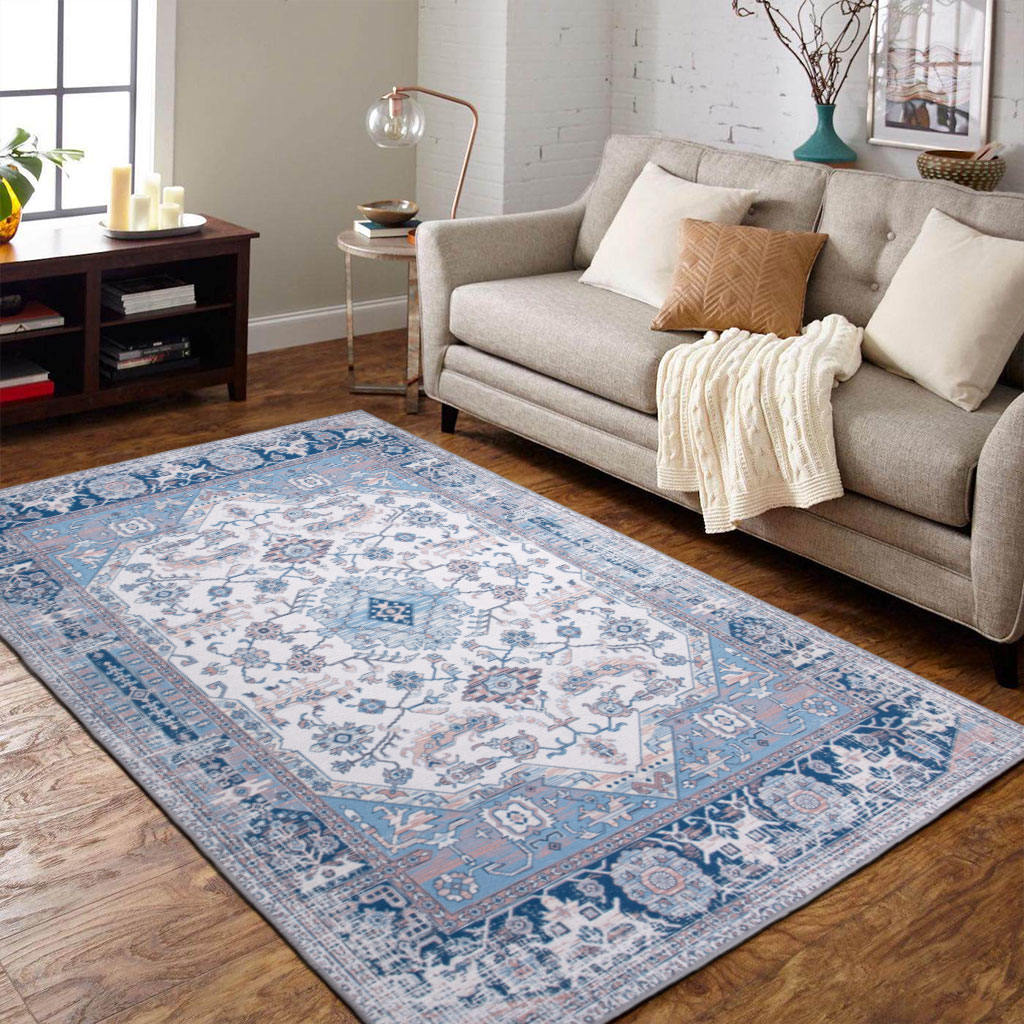 2025.11.26
2025.11.26
 Industry News
Industry News
Area rugs are far more than simple floor coverings; they are fundamental design elements that introduce warmth, texture, color, and a sense of defined space to any room. From protecting beautiful hard-surface flooring to anchoring furniture arrangements, understanding the product features of an area rug is key to making a wise and lasting investment.
The material used in an area rug dictates its feel, durability, and maintenance requirements. They generally fall into two categories: natural and synthetic fibers.
|
Material Type |
Key Characteristics |
Best Use/Traffic |
|
Wool |
Durable, soft, naturally stain-resistant, flame-resistant. The gold standard for longevity. |
High-traffic areas (living rooms, hallways). |
|
Silk |
Extremely soft, luxurious, and highly lustrous. |
Low-traffic, decorative areas (bedrooms, formal settings). |
|
Jute/Sisal/Seagrass |
Natural, sustainable, adds organic texture. Can be rougher underfoot. |
Moderate-traffic areas (dining rooms, sunrooms). |
|
Cotton |
Soft, washable, affordable. Tends to be flat-woven or braided. |
Casual, low-traffic areas (laundry rooms, bathrooms). |
|
Polypropylene (Olefin) |
Highly stain-resistant, moisture-resistant, durable, and affordable. |
High-traffic, moisture-prone, or kid/pet areas. |
|
Nylon |
Very durable, resilient, and resistant to wear and crushing. |
Heavy-traffic areas (hallways, commercial spaces). |
|
Polyester |
Soft feel, vibrant colors, generally less durable than wool or nylon. |
Low to medium-traffic areas. |
The method of construction profoundly impacts the rug's quality, texture, and price.
Hand-Knotted: Considered the highest quality. Individual knots are tied by hand to the warps (vertical threads). This process is meticulous and results in a unique, durable rug that can last for generations and often increases in value.
Hand-Tufted: Created by punching strands of fiber through a fabric backing, which is then held in place with an adhesive and a secondary backing. These are more affordable than hand-knotted but less durable. They may shed more initially.
Machine-Made (Power-Loomed): Produced quickly by large mechanical looms. This allows for complex designs at a lower cost. These rugs are generally very uniform and offer good value for high-traffic, budget-conscious areas.
Flat-Weave: Rugs like kilims are woven on a loom without a pile, resulting in a thin, reversible textile. They are durable, easy to clean, and perfect for layering or under dining tables.

"Pile" refers to the density and length of the fibers.
Low Pile (under 1/4 inch): Easier to clean, less likely to trip on, and ideal for under furniture and in high-traffic areas. Provides a sleek, modern look.
Medium Pile (1/4 to 1/2 inch): The most common choice, offering a good balance of comfort and durability. Suitable for most living and dining spaces.
High Pile (over 1/2 inch): Includes shag and thick-loop rugs. Offers maximum comfort, warmth, and sound absorption, but is harder to clean and best reserved for low-traffic spaces like bedrooms.
A quality rug pad is a non-negotiable accessory that:
Safety: Prevents the rug from slipping and sliding, eliminating a tripping hazard.
Protection: Acts as a buffer, preventing the rug's fibers and backing from scratching or damaging the hard flooring underneath.
Longevity: Absorbs impact, reducing wear and tear on the rug's fibers and extending its lifespan.
Comfort: Adds an extra layer of cushioning and insulation.
Definition: They visually segment a large or open-concept room, clearly defining areas like a living space from a dining area.
Comfort & Warmth: They provide a soft, warm surface underfoot, especially on hard tile or wood.
Acoustics: They act as sound dampeners, absorbing ambient noise and making a room feel quieter.
Floor Protection: They shield hard floors from scratches, scuffs, and fading due to foot traffic.
Selecting the right area rug involves balancing material, construction, size, and style to meet the functional needs and aesthetic goals of your space.